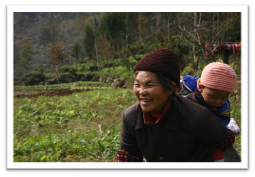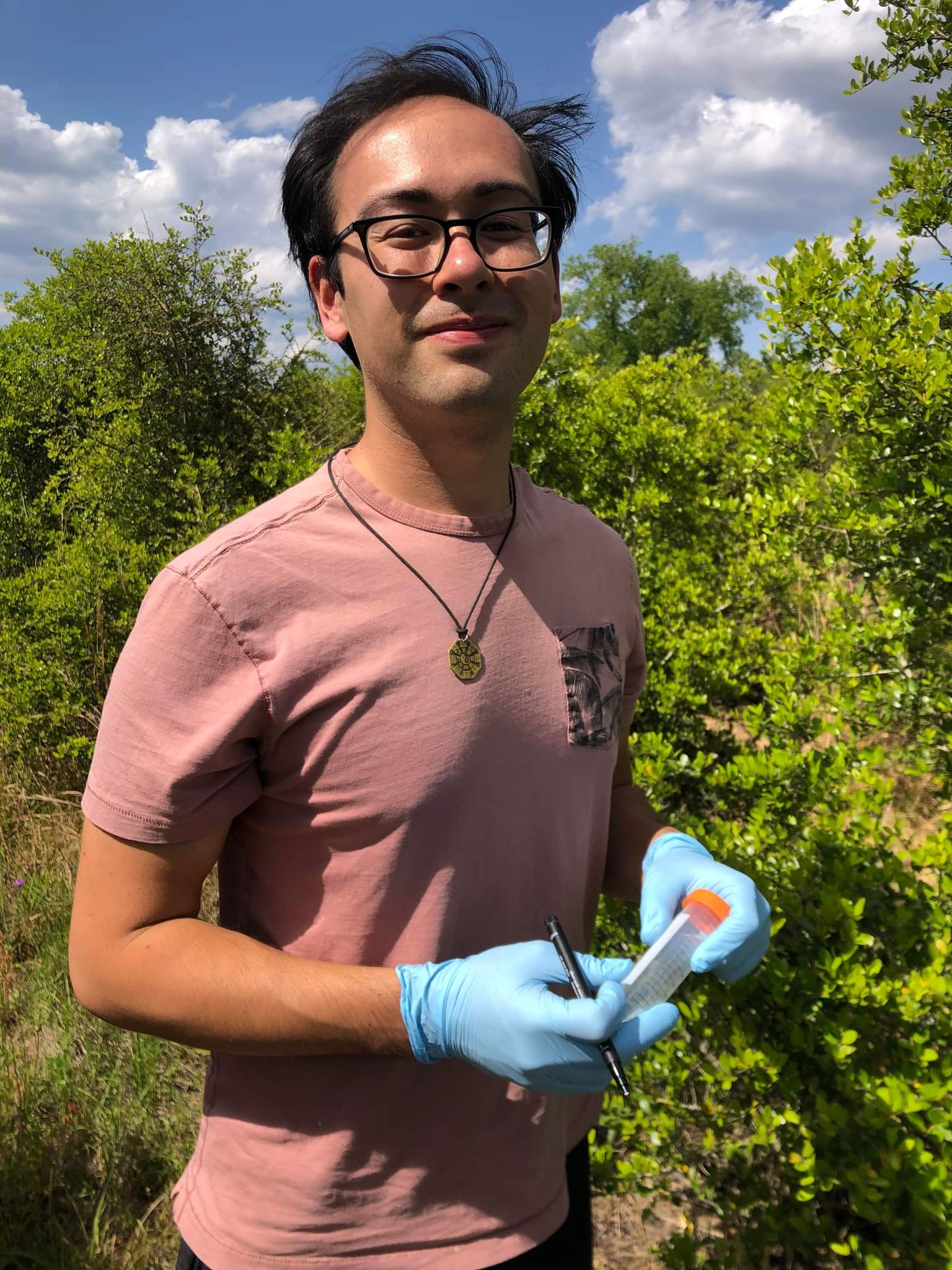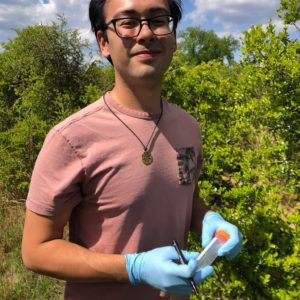Picture this: you find yourself strolling into a small, crowded shop in downtown Hong Kong. As you cross the threshold, a barrage of strange sights and smells attacks your nose and vision. As you turn your gaze to the walls, you notice shelves upon shelves of animal parts, mysterious fungi, and dubious bunches of dried plants all with purposes and values unknown to you. And yet, the store is also filled with people: people that all seem to know exactly what they are looking for in this apparent chaos of once-living things. The lady behind the counter smiles at you. “Can I help you find anything?”
Culture shock is a very real phenomenon for many people. Therefore, it is important to learn how to move past this and understand the context of others’ beliefs. Conservation isn’t the first place your mind might jump when thinking about cultural understanding, but a failure to communicate across borders may mean the difference between survival and extinction for hundreds of threatened and endangered species of wildlife around the world, notably those used in the practice of traditional Chinese medicine, or TCM.
The Conflict
TCM is a widespread and storied form of medicine for millions. However, harvesting these remedies has a significant impact on wildlife and presents major conservation issues. These issues are beginning to make a splash in the media, with articles by TIME, National Geographic, and Forbes all bringing attention to the controversy in the US. Many cite TCM’s increasing popularity in other parts of the world and China’s recent economic growth as challenges to future conservation efforts.
So then, why not ban the harvest of threatened species?
It’s not quite that simple.
On the surface, the system appears to be working. Field studies take data on species threatened by overharvesting, whose findings flow to data-compiling organizations like the International Union for Conservation of Nature (IUCN). IUCN data shapes international laws/treaties (i.e. CITES) that push governments (in this case, the Chinese government) to invoke top-down legislation intended to protect vulnerable wildlife. And yet, a dangerous number of species are falling through the cracks. Tigers are a famous example, whose body parts are used in TCM to treat everything from arthritis to impotence. Between the years of 1997 and 2007 alone, the range occupied by tigers was estimated to have dropped by 41%, even though commercial trade of tiger parts is against international law. In spite of laws prohibiting trade of endangered seahorse species and strict regulations on size limits, a genetic survey of seahorses in Taiwanese markets found that many individuals on the market were wild-harvested endangered species, and not of legal size. Plant conservation is also an important but often-overlooked area, especially considering how many remedies in TCM are herbal in nature. A survey in 2015 found that out of 3,767 threatened species of plants in China, over 800 are still not protected by national nature reserves, with the effectiveness of the reserves themselves under scrutiny. Indeed, it seems that in lieu of the millions of dollars poured into conservation efforts, the system designed by governments and conservation NGOs to protect species threatened by TCM is broken, or at least leaky.
Why, then, are modern conservation principles failing to protect these species? The problem – and the solution – are about understanding TCM.
What is TCM?
Traditional Chinese medicine, as defined by the National Institutes of Health, is the amalgamation of non-Western herbal remedies, mind, and body applications used by practitioners in China to heal patients for thousands of years. It is short-sighted at best (and dangerous at worst), however, to collapse TCM to a simple set of medical practices. Contrary to the bulk of Western medicine which is viewed relatively sovereign from daily life, TCM is better described as a sort of cultural thread, not unlike religion or art, that is woven into the very fabric of the Chinese way of life. Although its herbal and animal remedies remain the most controversial and well-known subsets, practices such as acupuncture and tai chi are also included in TCM, as well as more holistic approaches like diet. Indeed, traditional Chinese medicine is filled with examples that blur the lines between food and medicine, and between lifestyle and therapy. It is for this reason most current Western conservationist campaigns and legislation have failed to effectively address the unsustainability of many TCM practices. At its heart, the overharvesting of wildlife for TCM is not rooted in poachers or TCM practitioners but in the ever-growing demand of its massive consumer base, in whose lives TCM is deeply woven. Why is this important? It means that any attempt to change or ban the use of TCM using top-down legislation is also an attempt to uproot cultural traditions that have been in place for thousands of years.
Why are species falling through the cracks?
An increasing number of voices are beginning to argue that this breakdown occurs at the local level, where communities directly interact with species of concern, and that it is a result of uninformed attempts to apply Western conservation principles to a society that views wildlife and medicine in a different way. The “nature for nature’s sake” ideas of preservation and romantic notions of “the wild” as public motivation for conservation popularized in the US intrinsically clash with traditional Chinese views, which prioritize use and can be better described as “nature for people.” The result? A mismatch in priorities between the people directing conservation policies and the people interacting with the conserved species – a situation destined for conflict. And indeed, evidence shows that the bulk of the conservation problem in China and other Asian countries stems from poor enforcement at local levels. Many of the internationally-pushed conservation policies currently in effect in China ignore or dismiss the fact that traditional Chinese medicine is an integral part of a culture dating back ~5000 years. This effectively results in a communication gap that can in some ways be viewed as cultural disrespect. If conservation NGOs and Western activists wish to play a role in convincing the Chinese government and people that endangered species are worth protecting, they must first be able to view the issue not as environmentalists, but as avid users of TCM.
Resolving the communication gap
The clash between conservation and traditional Chinese medicine may be incredibly complex, but there is some hope for compromise that promises benefits for both sides. International pressure in the form of trade sanctions has proved effective in motivating China’s government into taking extra steps to conserve its wildlife. However, as China’s economy and fledgling conservation ethos develops, local enforcement and sustainable land-use policies that recognize indigenous peoples and cultures will be increasingly crucial. Villages of small ethnic minority groups have existed in the more remote parts of China for hundreds of years – to uproot them for the sake of preserving wildlife a la Yellowstone National Park would likely be ineffective, as well as bring human rights violations into question.China must conserve its natural resources, but for any solution to be truly effective, it must be Chinese.

In conflicts of interest such as this, an integrated approach to conservation is necessary. For example, a few reserves in China protecting the habitat of clouded leopards and pandas are managed mostly by locals. These indigenous peoples are provided special usage rights so they can sustainably continue their traditions involving wildlife while under supervision by the national government. Though by no means perfect, these types of solutions offer a general template for sustainable conservation. Chinese-run programs that educate local people about the importance of conservation in ensuring traditions like TCM stay alive will be critical to ensure conservation laws work at a local scale. Government self-checking of these programs will ensure funds are being allocated appropriately to best preserve the balance between resource usage and conservation. Finally, Western governments and international treaties will keep pressure on the national government to cement a conservation ethos in legislation while conservation NGOs and academia collect data on threatened species to inform conservation strategies at all levels. A world where traditional Chinese medicine exists in harmony with nature may be a lofty goal, but with international cooperation, effective communication, and basic respect between TCM users and conservationists, it just might be within reach.
Featured Image: Seahorse: Jonathan Zander, CC BY-SA 2.5, Herbs: Daniel Go, CC BY-NC 2.0, Tiger: CC0 1.0
References
1. A. Bligh, How traditional Chinese medicine drove the discovery of a Nobel-winning anti-malarial drug. The Conversation: Health and Medicine (2015).
2. A. Heydlauff et al., The Fate of Wild Tigers. BioScience 57, 508-514 (2007).
3. B. Moyle, The black market in China for tiger products. Global Crime 10, 124-143 (2009).
4. C. Campbell, Traditional Chinese Medical Authorities Are Unable to Stop the Booming Trade in Rare Animal Parts. TIME Magazine (2016).
5. C. Coggins, The Tiger and the Pangolin: Nature, Culture, and Conservation in China. University of Hawai’i Press: Honolulu, HI (2003).
6. C.-H. Chang, N.-H. Jang-Liaw, Y.-S. Lin, Y.-C. Fang, K.-T. Shao, Authenticating the use of dried seahorses in the traditional Chinese medicine market in Taiwan using molecular forensics. Journal of Food and Drug Analysis 21, 310-316 (2013).
7. D. F. Maron, Will mainstreaming traditional Chinese medicine threaten wildlife? National Geographic: Animals (2018).
8. D. Fox, Healing Powers. Conservation Magazine (2008).
9. D. Schmidtz, When Preservationism Doesn’t Preserve. Environmental Values 6, 327-339 (1997).
10. Environmental Ethics: What Really Matters, What Really Works, NY: Oxford University Press.
11. E. Yong. The World’s Most Valuable Parasite Is In Trouble. The Atlantic: Science (2018).
12. H.-C. Lo, C. Hsieh, F.-Y. Lin, T.-H. Hsu, A Systematic Review of the Mysterious Caterpillar Fungus Ophiocordyceps sinensis in DongChongXiaCao (???? D?ng Chóng Xià C?o) and Related Bioactive Ingredients. Journal of Traditional and Complementary Medicine 3, 16-32 (2013).
13. J. Conca, Extinction By Traditional Chinese Medicine – An Environmental Disaster. Forbes Magazine (2014).
14. J. Lite, What is Artemisinin? Scientific American: Health (2008).
15. J. Still, Use of animal products in traditional Chinese medicine: environmental impact and health hazards. Complementary Therapies in Medicine 11, 118-122 (2003).
16. K. Swan, K. Conrad, The Conflict between Chinese Cultural and Environmental Values in Wildlife, in Paul Harris and Graeme Lang (eds.). Routledge Handbook of Environment and Society in Asia: 321-335 (2014).
17. K. A. Hopping, S. M. Chignell, E. F. Lambin, The demise of caterpillar fungus in the Himalayan region due to climate change and overharvesting. Proceedings of the National Academy of Sciences of the United States of America 115, 11489-11494 (2018).
18. P. Li, Tigers, rhinos, and a bitter pill for conservation. Asia and the Pacific Policy Society (2018).
19. Q. Jia, Traditional Chinese medicine could make “Health for One” true. World Health Organization: Commission on Intellectual Property Rights, Innovation, and Public Health (2004).
20. S. A. Mainka, J. A. Mills, Wildlife and Traditional Chinese Medicine: Supply and Demand for Wildlife Species. Journal of Zoo and Wildlife Medicine 26, 193-200 (1995).
21. S. Denyer, ‘Himalayan Viagra’: Tibet’s gold rush may be coming to an end. The Washington Post (2016).
22. S.-L. Chen et al., Conservation and sustainable use of medicinal plants: Problems, progress, and prospects. (2016), vol. 11.
23. T. M. Lee, A. Sigouin, M. Pinedo-Vasquez, R. Nasi, The harvest of wildlife for bushmeat and traditional medicine in East, South and Southeast Asia : Current knowledge base, challenges, opportunities and areas for future research. : 46p. CIFOR Occasional Paper No. 115. Bogor, Indonesia: Center for International Forestry Research (2014).
24. T. P. Lam, Strengths and weaknesses of traditional Chinese medicine and Western medicine in the eyes of some Hong Kong Chinese. Journal of Epidemiology and Community Health 55, 762 (2001).
25. Various Authors, Traditional Chinese Medicine: In Depth. NIH: National Center for Complementary and Integrative Health (2013).
26. Y. Chen, Y.-C. Chen, Y.-T. Lin, S.-H. Huang, S.-M. Wang, Cordycepin Induces Apoptosis of CGTH W-2 Thyroid Carcinoma Cells through the Calcium?Calpain?Caspase 7-PARP Pathway. Journal of Agricultural and Food Chemistry 58, 11645-11652 (2010).
27. Z. Liu, Z. Jiang, H. Fang, C. Li, A. Mi, J. Chen, et al. Perception, Price and Preference: Consumption and Protection of Wild Animals Used in Traditional Medicine. PLoS ONE 11(3) (2016).
28. Z. Qi, Z. Liming, W. van Lerberghe, The importance of traditional Chinese medicine services in health care provision in China. 2011 (2011), vol. 2.1. T. Yu, J.-S. He, J. li, Z. Tang, Distribution and conservation of threatened plants in China. Biological Conservation192, 454-460 (2015).
About the Author
Ben Long is a Ph.D student in the Department of Genetics at the University of Georgia studying both the population genetics of yaupon holly, a naturally caffeine-containing plant native to the American southeast, as well as the microbiomes of plant hosts and their pathogens. Outside of the lab, he enjoys playing his ukulele, foraging wild medicinal plants and homebrewing various beverages.
-
Ben Longhttps://athensscienceobserver.com/author/ben-long/February 7, 2024
-
Ben Longhttps://athensscienceobserver.com/author/ben-long/







